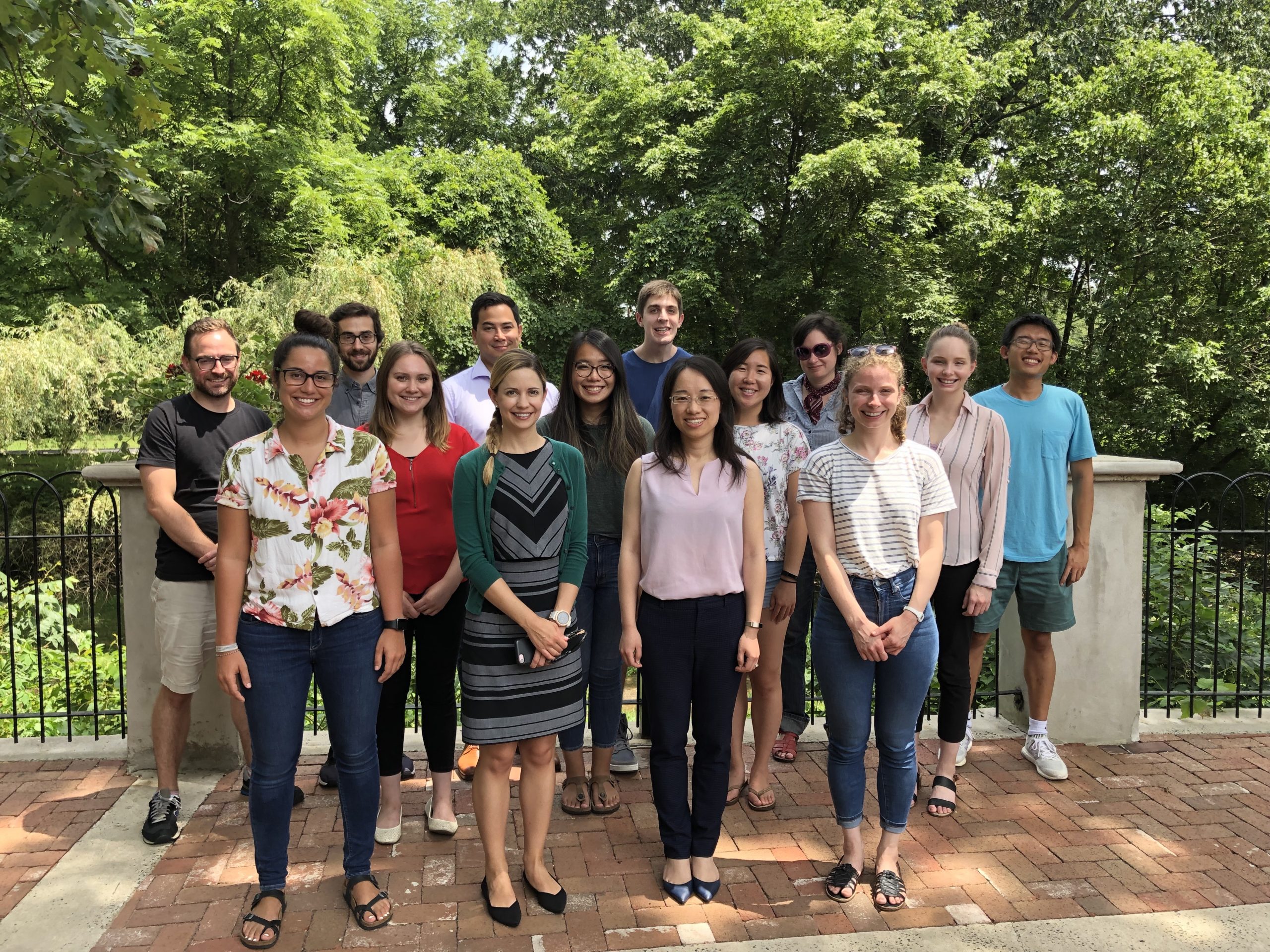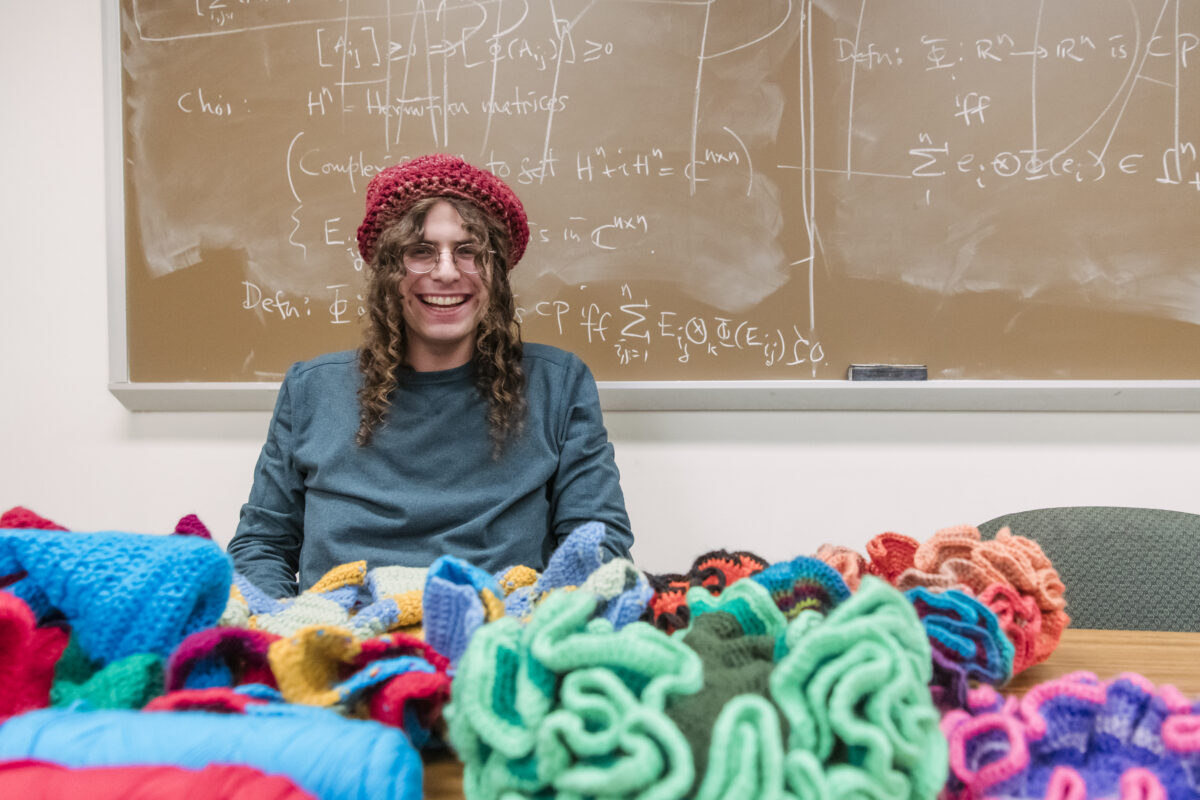When he was 16, Jeremy Rubin ’20, M28, mathematics and statistics, tagged along to one of his sister’s doctor appointments. Six years his senior and a 2014 UMBC alumna, she was recovering from a complete spinal fusion to treat her scoliosis. Doctors had been monitoring her condition for years before the surgery, and she had worn a brace for 18 months in preparation. At the appointment, Rubin’s mother suggested the doctor examine his back as well, just in case.
“And then, right there in the doctor’s office, they said I should have the same surgery in a month,” Rubin recalls. “What’s really fascinating, I think, is that we both needed the surgery, yet we had very different diagnosis and pre-treatment experiences. So it made me think, how can I use my interest in statistics to help the field of precision medicine? How can we tailor diagnoses and treatments to the individual?”
The contrast between Rubin’s and his sister’s experiences with scoliosis, and his skill and passion for statistics, have driven Rubin to success in his UMBC coursework and in several research experiences on and off campus. This year, he applied for the National Science Foundation (NSF) Graduate Research Fellowship, which he, Danilo Symonette ’20, computer science, and seven UMBC alumni received this year. These prestigious fellowships offer full funding for three years of graduate study at any accredited institution in the U.S.
Piecing it together
Rubin began his research career during his first year at UMBC with Bradford Peercy, professor of mathematics and statistics. They used math to better model cell migration in fruit flies. “That was really exciting,” Rubin says, “because it gave me my first hands-on experience using theoretical math techniques, but applying it to a real-world biological situation.”

That summer, he pursued an internship at the National Institute of Standards and Technology. There, he worked to develop better methods to process images generated by virtual reality environments.
Back at UMBC the next fall, he contributed to efforts using statistical techniques to analyze genetic data related to the structure of DNA. The project was a collaboration between Erin Green, assistant professor of biological sciences, and DoHwan Park, assistant professor of mathematics and statistics.
All of these experiences led Rubin to a project at the University of Pennsylvania’s Perleman School of Medicine in 2018. The project combines his mathematical skill, desire to use math to address biological questions, and image processing background. He’s still working on it today, and plans to continue to pursue it as a Ph.D. student at Penn’s Perleman School this fall.
“We’re interested in seeing if we can make an association between certain brain regions and the onset of mild cognitive impairment in patients with Alzheimer’s. That’s the end goal,” Rubin says. “It’s a really nice combination of my previous work with imaging and also looking at biological data.”
Support from every angle
Rubin attributes his success, especially in obtaining research opportunities such as the NSF fellowship, in part to the incredible support he’s received from the Meyerhoff and MARC U*STAR Scholars programs.

“Maybe the single greatest thing I’m thankful for is the individual coaching,” Rubin says. As an example, he was in the Meyerhoff office when he found out that he would have a graduate school interview in less than 72 hours. When he told Jackie King, associate director of the MARC U*STAR program, she gave him a mock interview on the spot.
The intensive peer mentoring offered through the programs has also had a major impact on Rubin. “I like that I can now pay it forward,” Rubin says, by advising two younger Meyerhoff Scholars.
As his career progresses, Rubin plans to stay connected to teaching and advising. “I really want to combine my passion for teaching with doing research,” he says. As a result, he plans to pursue a path in academia. “I think an academic setting would best balance the ability to teach and mentor students while also doing research.”
Contributions across the country
Even once he’s in Philadelphia, Rubin plans to stay connected to UMBC. “The MARC and Meyerhoff programs encourage you to not just be a good student, but also be an academic leader in any way you can—to give back to your community, and really show excellence in all aspects of your career,” Rubin says.
After four years at UMBC, “I feel well-equipped to go to Penn,” Rubin says. At the same time, his advisor, Elizabeth Stanwyck, senior lecturer in mathematics and statistics, suggested he might give a department seminar back at UMBC sometime during his graduate study. “I want to stay connected and tell the students anything I can to help them out for the future,” he says.

While Rubin is at Penn, UMBC’s other Graduate Research Fellowship recipients will be earning doctorates across the country, including two other alumni at Penn’s Perelman School: Maya Hale ’18, biological sciences and psychology, and Sam Giannakoulias ’18, biochemistry and molecular biology and mathematics.
The other recipients are also conducting research as Ph.D. students at top-tier institutions. Stephanie Korenic ’12, media and communication studies and psychology, is working to improve the way neuroimaging is used in the study of psychosis at Temple University. Jason Hughes ’18, M26, chemical engineering, and Ann Cirincione ‘18, M26, bioinformatics and computational biology, are studying biological systems using big data. Hughes is pursuing his Ph.D. at Vanderbilt University, and Cirincione is at Princeton. Shannon Clancy ‘19, mechanical engineering, is focusing on internal combustion engines at the University of Michigan, and Fatima Touma ’09, anthropology, is at University of North Carolina at Chapel Hill, studying health disparities with a focus on immigrant communities
Whether examining biological systems or human-designed machines, UMBC alumni are making important contributions everywhere they go. Their new NSF Graduate Research Fellowships will help them do even more and go even farther.
Banner image: Jeremy Rubin with the Penn Statistics in Imaging and Visualization Endeavor (PennSIVE) lab group during his summer internship there in 2018. This fall, he’ll embark on a Ph.D. with the same team.
All photos courtesy of Jeremy Rubin.
Tags: ClassOf2020, CNMS, MathStat, Undergraduate Research




